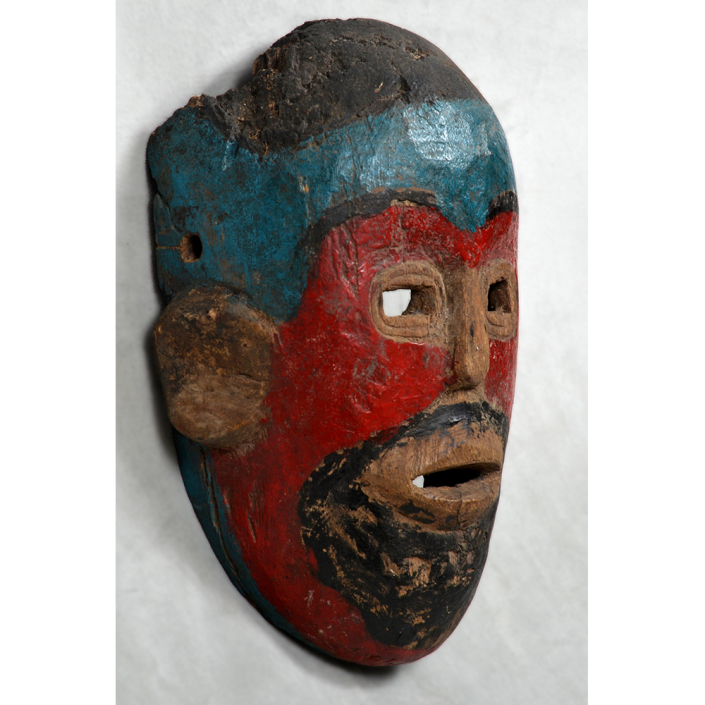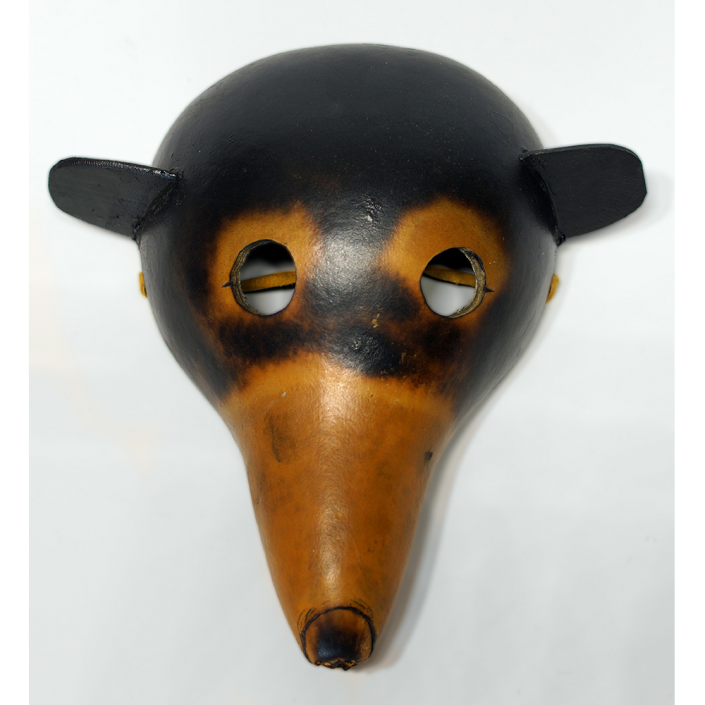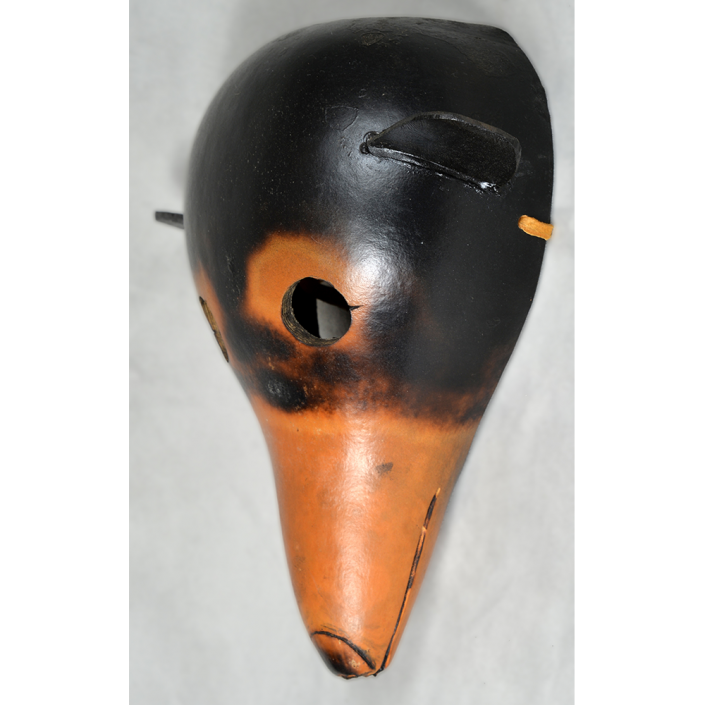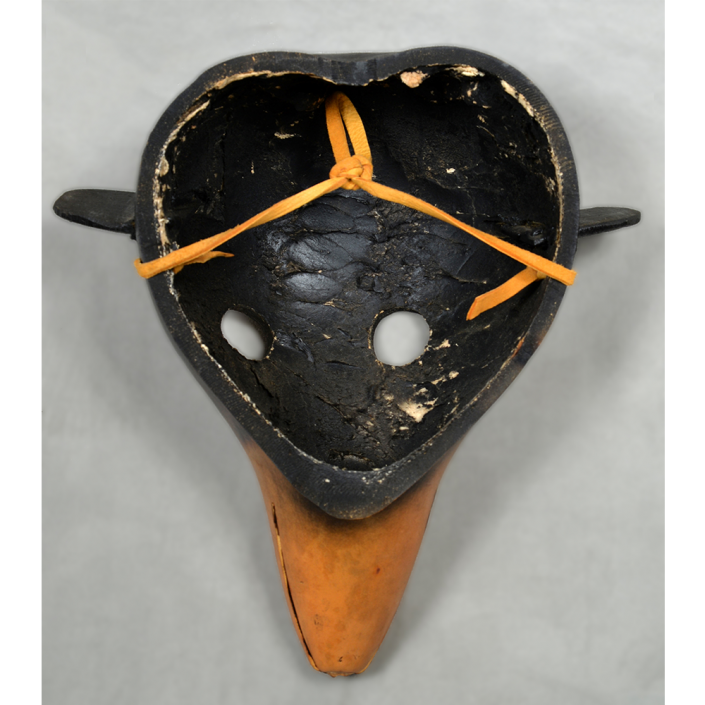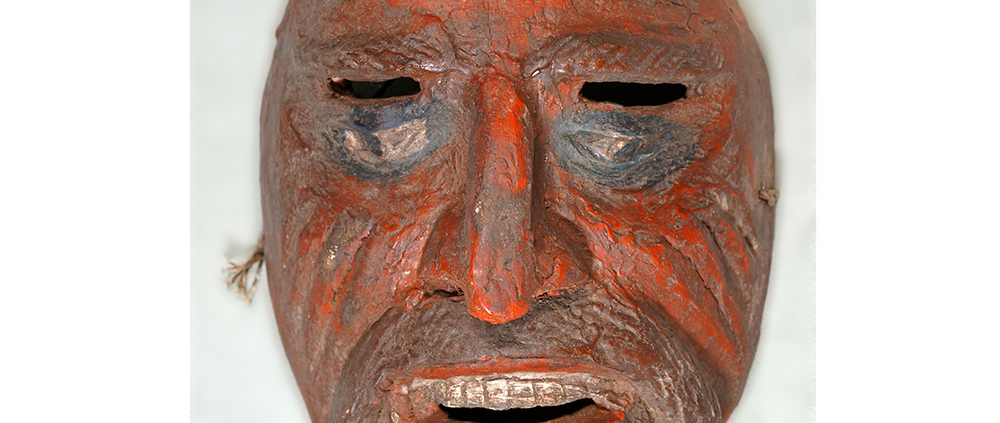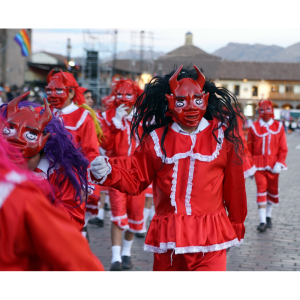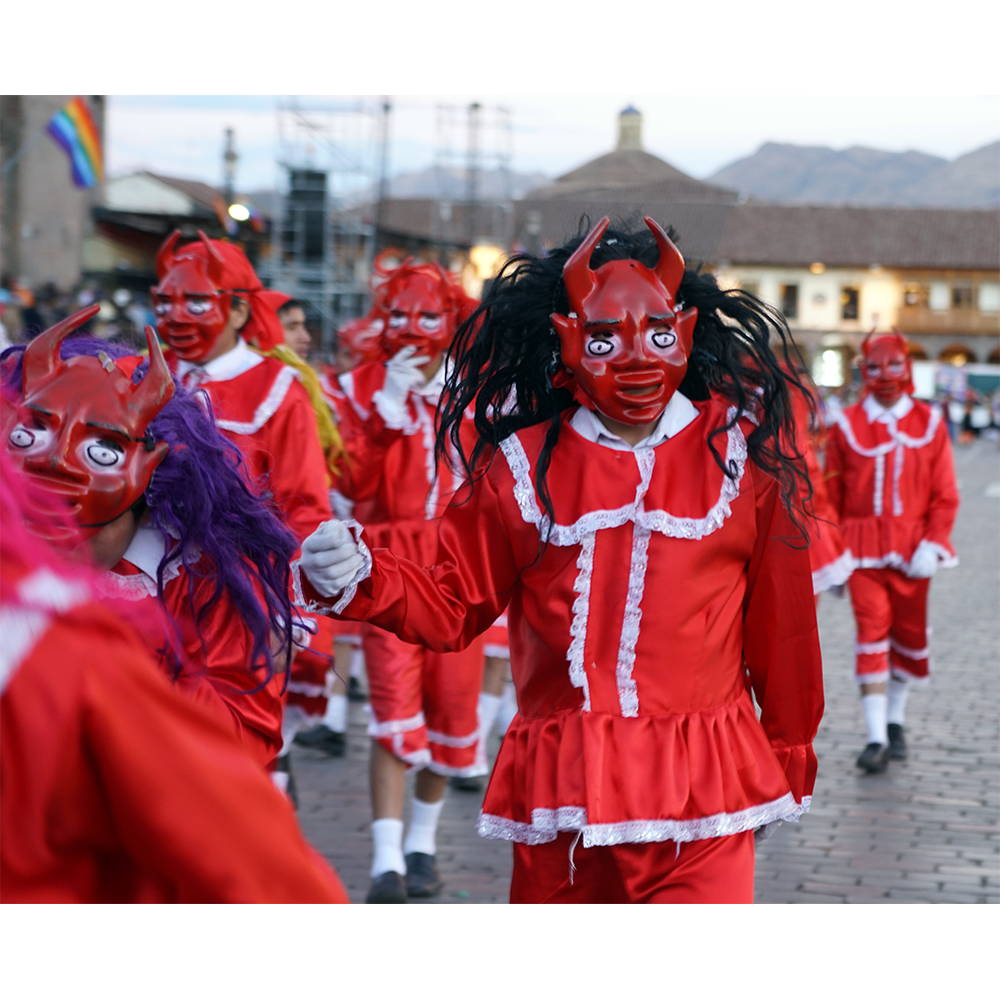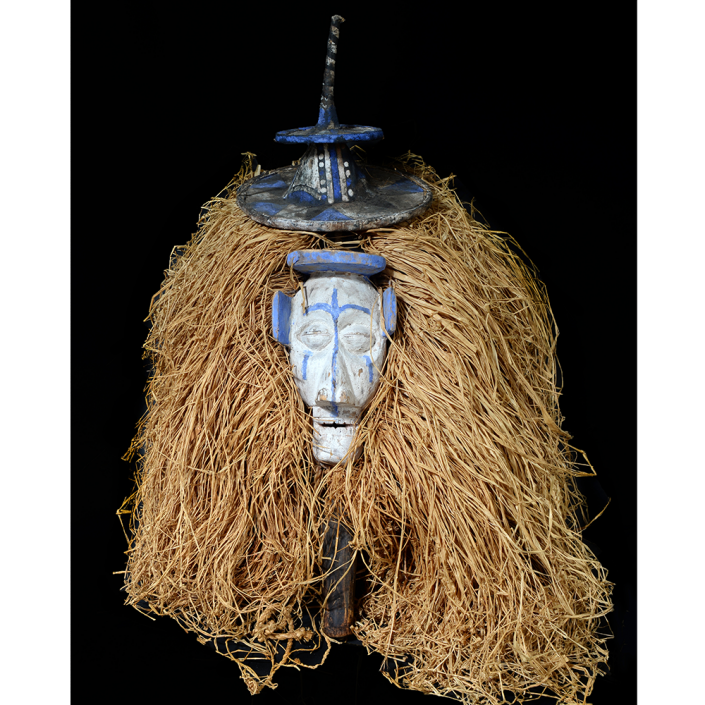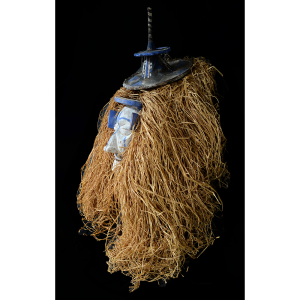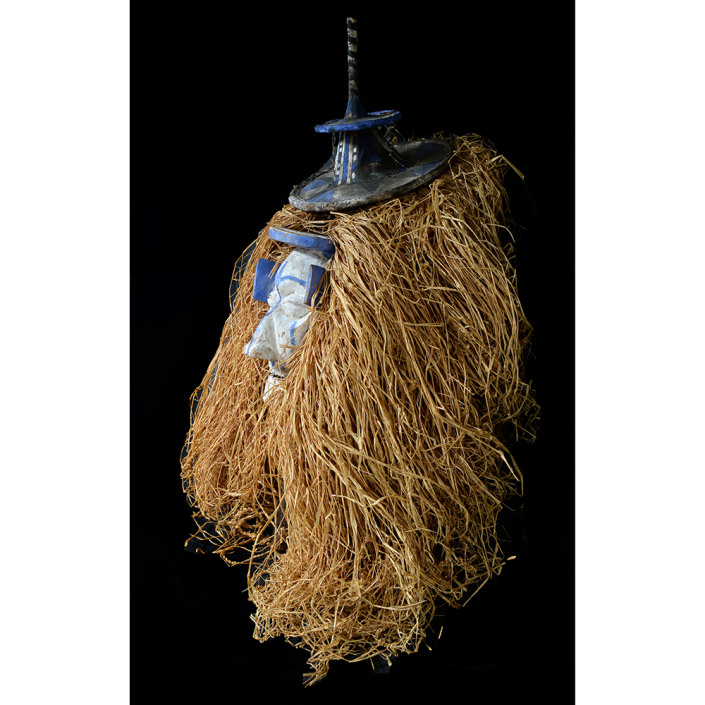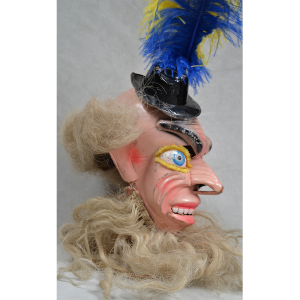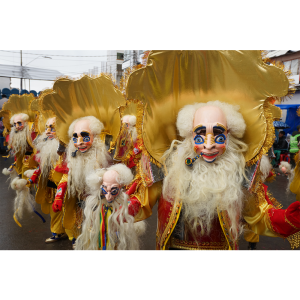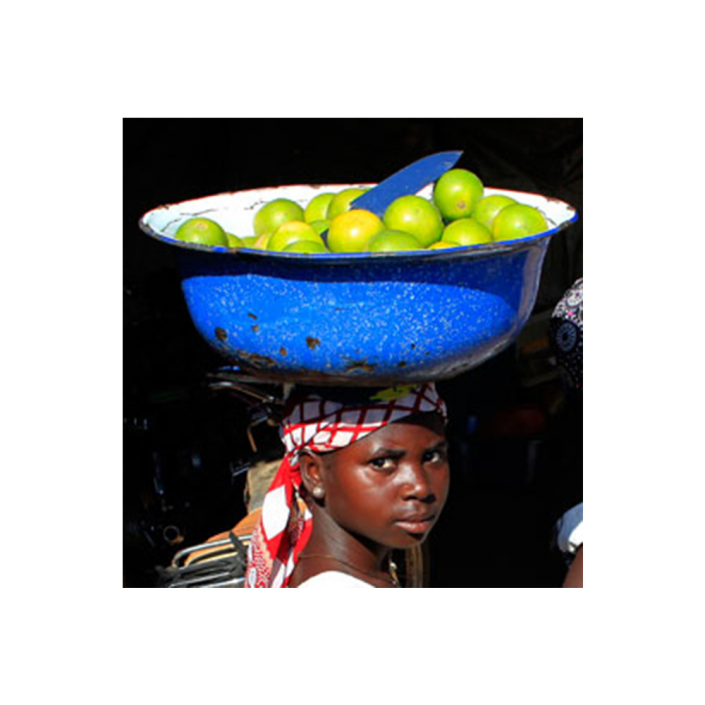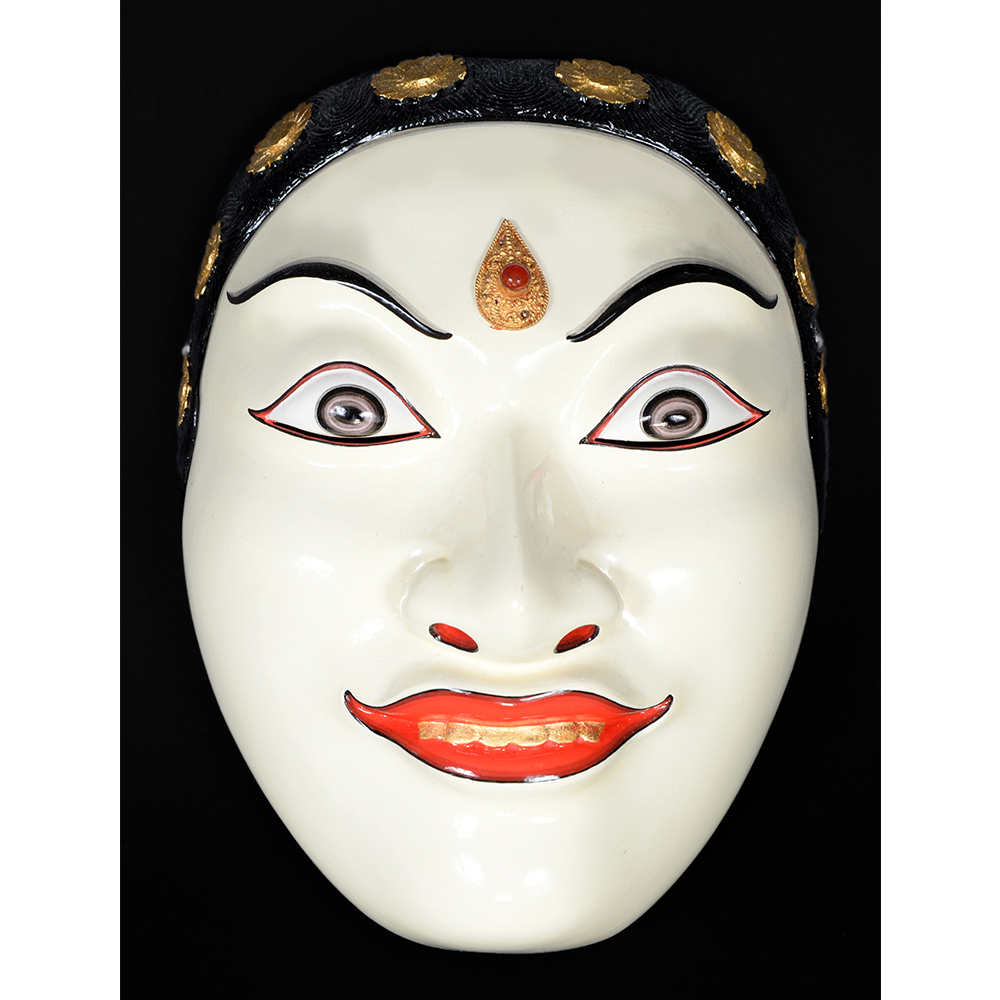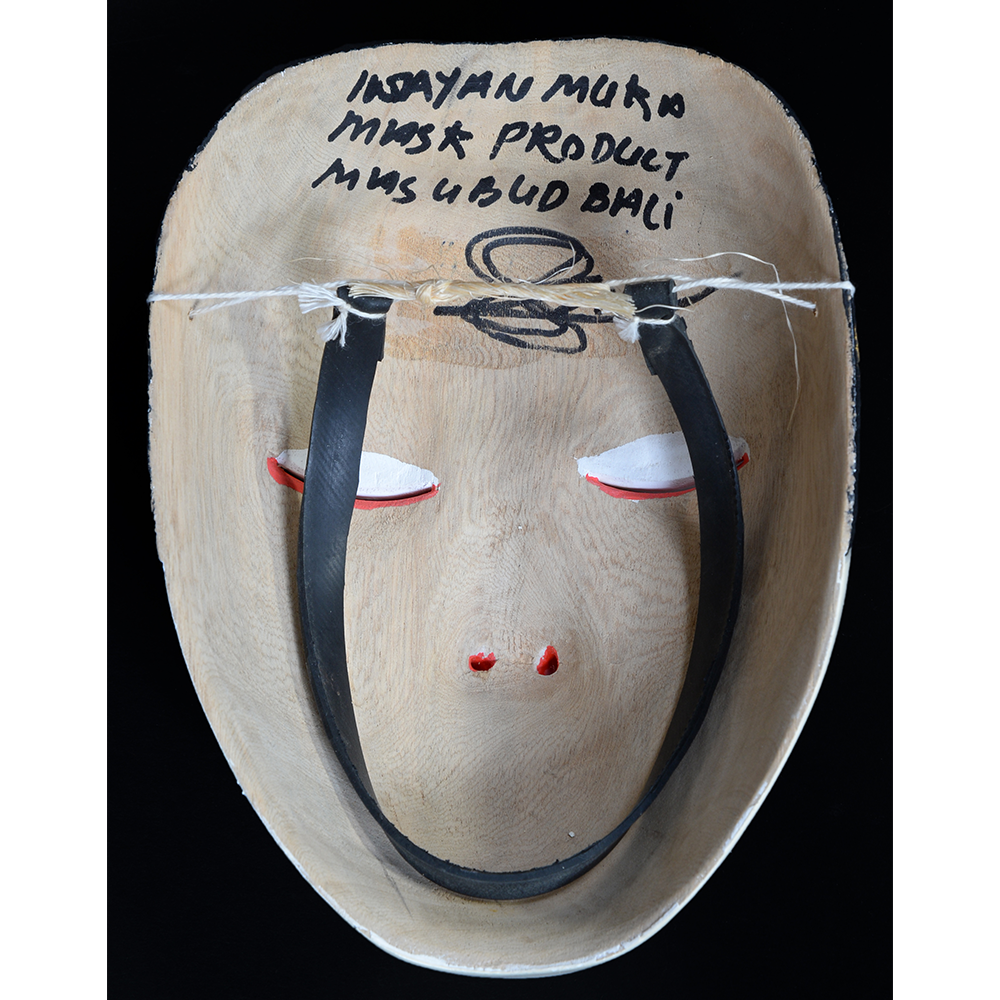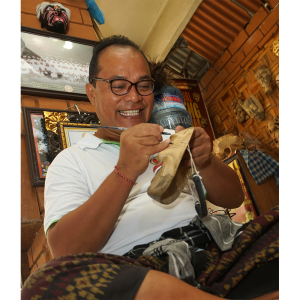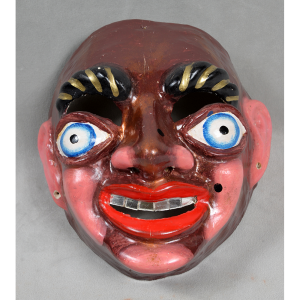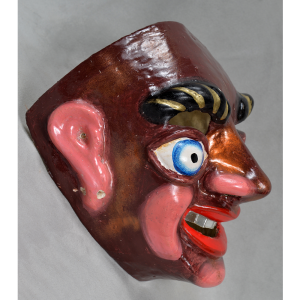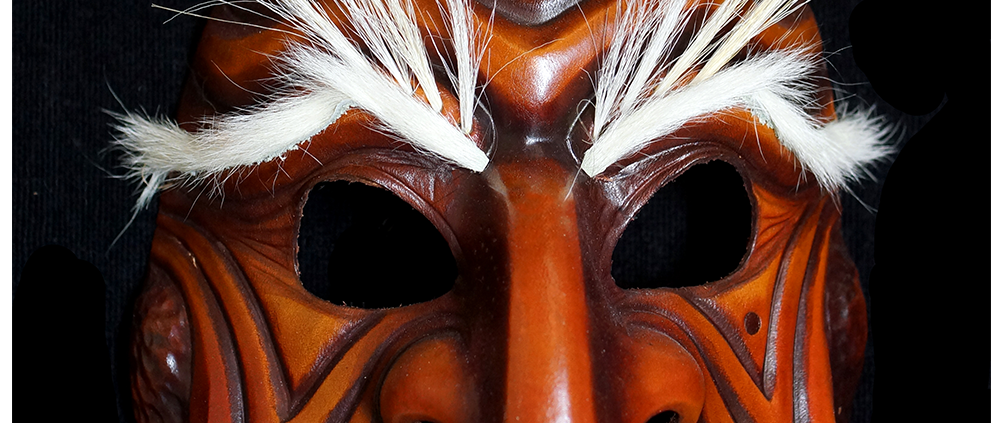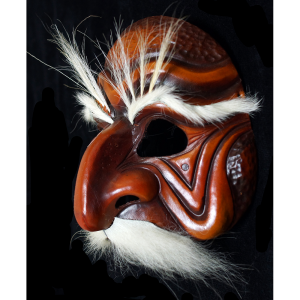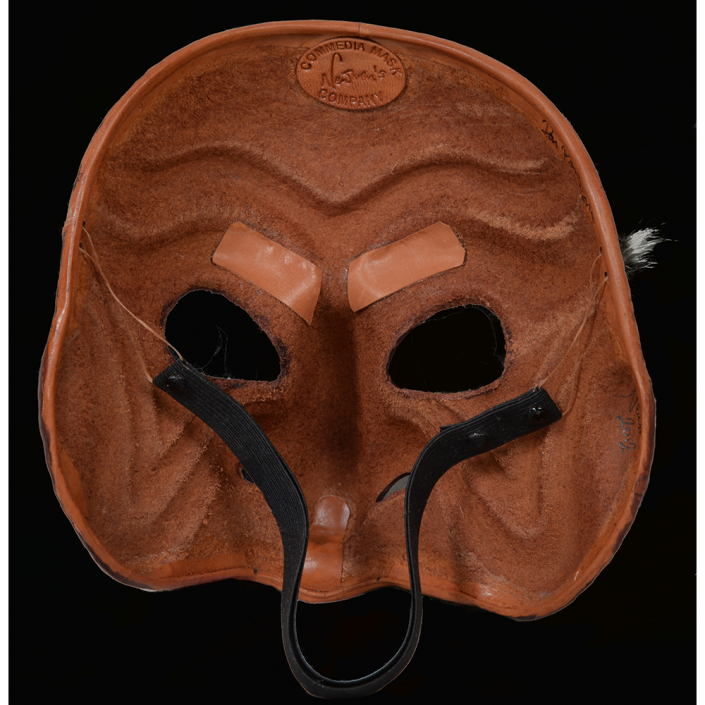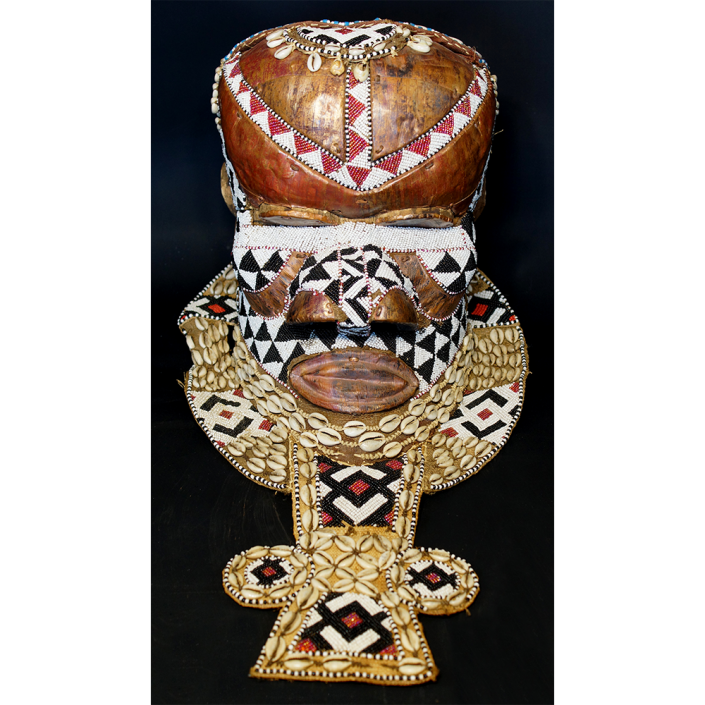TITLE: Achachi Mask
TYPE: helmet mask
GENERAL REGION: Latin America
COUNTRY: Bolivia
SUBREGION: Oruro
ETHNICITY: Quechua and Aymara
DESCRIPTION: Achachi (Foreman) helmet mask
CATALOG ID: LABO010
MAKER: Unknown maker in Oruro
CEREMONY: Carnival (La Morenada)
AGE: 1980s
MAIN MATERIAL: tin sheet
OTHER MATERIALS: cotton cloth; plant fibers; wire; paint; dyed ostrich feathers
The Morenada (Dance of the Moors) is an annual ceremony in several towns in the Altiplano region of Bolivia, Peru, and northern Chile, usually incorporated into Carnival. The dance includes both male and female Moors dancing in a group with whips, rattles, or scepters. A King of the Moors (Rey de Morenos) presides and coordinates the dance. The dance typically occurs in the course of a parade, with marching bands playing musical scores for the dancers. The precise origins of the Morenada are the subject of debate, with most specialists concluding that the dance was inspired by African slaves brought to Bolivia to work the mines or the subsequent integration of Africans into the Yungas community near La Paz. The morena wears a fancy version of the traditional Bolivian costume with the classic bowler hat.
This mask represents an achachi, an old, bald man who previously worked as a captain or slave-driver under a colonial landowner. The achachi may be represented as a black or white man (as here), but in either case he has a long, aquiline nose, bushy beard, cruel expression, and elaborate costume.
This specific mask was fashioned by a skilled mask-maker (caretero) in Oruro in the 1980s or 1990s. By this time, mask makers had ceased using linen soaked in plaster for their masks and begun using shaped tin or steel sheet, often recycled from old oil drums. Hand painting had also begun to give way to spray painting; both techniques were used on this mask.
For more on Bolivian masquerade, see Peter McFarren ed., Masks of the Bolivian Andes (La Paz: Editorial Quipus/Banco Mercantil SA, 1993).






